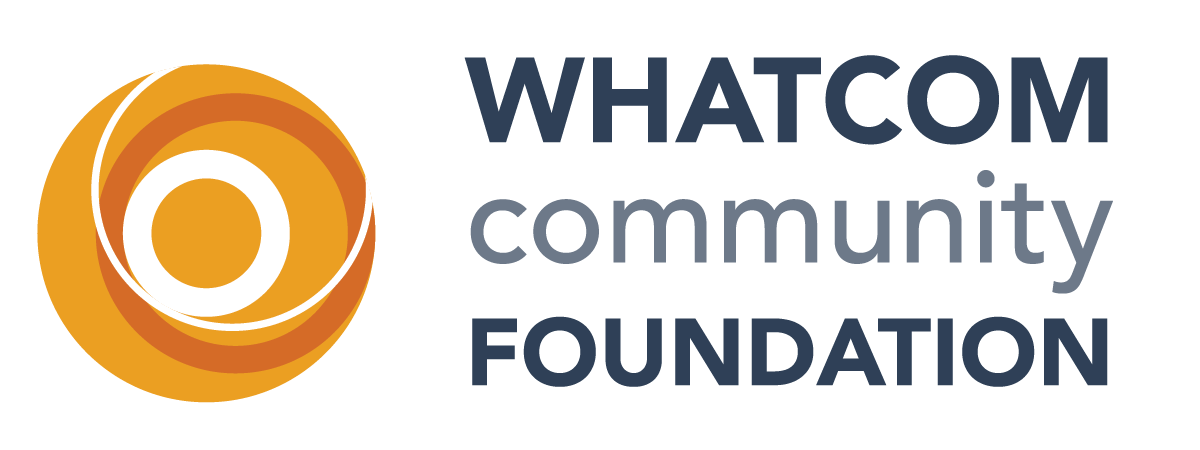
2025 THRIVE | Increasing Access & Belonging for Disabled People
Happy 2025 neighbors,
We try hard at the Whatcom Community Foundation to anticipate and support people’s needs, whether it’s learning food preferences, making schedule accommodations or ensuring that event setups are welcoming and accessible.
And yet recently I was caught off guard, the proverbial “deer in headlights” when a meeting attendee arrived who required a hearing accommodation. As we rushed to address the issue, we forced our guest into the painful position of being a surprise. We all know how that feels, and it’s not good. And yet, it is the daily experience of disabled people.
Documentary filmmaker James Robinson has a disabling eye condition. “I don’t have a problem with the way that I see,” he says. “My only problem is with the way that I’m seen.”
We go through life assuming everyone has the same abilities we do. We miss the friction, and the barriers disabled people encounter. What does our community lose when not everyone can participate? We appreciate when others point out the barriers we miss; still, we can do a better job of anticipating needs.

Mauri Ingram,
President & CEO
COMMUNITY CHALLENGE
Increasing access and belonging for disabled people.
According to the Centers for Disease Control and Prevention, one in four people in the United States is experiencing disability, either permanent, temporary or intermittent. That translates to more than 57,000 people in Whatcom County who are managing crutches, walkers or wheelchairs, navigating with impaired sight or hearing, grappling with cognitive challenges and/or dealing with mental health conditions at any given time.
Disabled people are our community’s largest and most diverse minority. Every size, gender, color, age and zip code is accounted for, and if it’s not you now, it could be at some point. (Disability rates increase with age.) Whether physical, intellectual, sensory or mental, or a combination thereof, whether it is apparent or invisible, disability and the wide-ranging experiences and needs associated with it is in our midst every day.
In addition to the daily obstacles and exclusions disabled people encounter each day as individuals who live in a society designed for able-bodied people, disabled people are more likely to live in poverty, be under or unemployed, face housing challenges and have unmet medical needs.
Whatcom County has several excellent nonprofit organizations that, along with public agencies, serve the needs of disabled people, from sponsoring wheelchair basketball games and connecting families with resources, to helping negotiate the labyrinthine system of government benefits or providing assistive technologies.
While they could all use more resources, what leaders yearn for is more preparedness, empathy and flexibility from the rest of the community; more understanding that living in a world set up for other people can be exhausting and defeating and isolating — and that it doesn’t have to be that way.
“When we design for disability first,” explains designer Elise Roy (who is deaf), “you often stumble upon solutions that are better than those when we design for the norm.” — Elise Roy, Universal Designer
Universal Design is a great start because it challenges the idea of “normal” and “disabled” and instead recognizes that we all experience a spectrum of abilities. Implementing universal design principles means making places (both physical and digital) that are accessible to a wide range of abilities, by creating ways for everyone to participate and enjoy all kinds of spaces.
There’s more work to do, and much of it hinges on public education.
“There’s a lot of support for disabled, not a lot of support for the public.” — Joel Bergsbaken, Hearing, Speech & Deaf Center
WHAT WE’RE DOING
- Funding nonprofits through grants and loans with Grantmaking and Donor Advised Funds.
A recent partnership between a local family and the Ferndale School District highlights the impact of collaboration. To complete the Mountain View Learning Center’s Accessible Playground, the School District needed a $700,000 loan. The project is fully funded by a reimbursable grant from Whatcom County, but the funds wouldn’t be available until after project completion. Thanks to a six-month, 0% interest loan from a Donor Advised Fund, the project can move forward on schedule without requiring the School District to divert resources to cover upfront costs. - We’ve established the Equity Fund
- Learning about what we can do as an organization to be ready for anyone
- Sharing our experiences and learnings with other nonprofits
HOW YOU CAN HELP
- Support a nonprofit serving Whatcom County’s disabled residents: The Airow Project, The Arc of Whatcom County, Max Higbee Center, Hearing Speech and Deaf Center, Lions Club, Whatcom Center for Early Learning, Animals as Natural Therapy, Community Boating Center’s Adaptive Sailing Program, Brigadoon Service Dogs.
- Give to the Equity Fund or the Mary Snapper Fund, a Field of Interest Fund dedicated to supporting children with special health care needs.
- Attend a unified sporting event – Many Whatcom County high schools field unified basketball and soccer teams. The games show community building and inclusion at its best.
- Build access into your business’ budget – While you may not know what is needed until the occasion arises, you can be prepared to respond. Bonus: Many employers aren’t aware that there is a disabled access tax credit for costs associated with providing access to employees or customers.
- Pre-design events/experiences. Most organizations routinely ask about food allergies and preferences but may still be surprised by attendees who need other accommodations, such as interpretation, assistive devices, or specific seating.
- Watch Crip Camp
- Consider hiring someone with a disability – More than 200 businesses and organizations in Whatcom County already have.
- Take a disability justice audit.
- Host a training for your team.
- Use the microphone! “You may not need it,” explains Beverly Porter, Executive Director of The Arc of Whatcom County. “But people in the audience do.” In other words, it’s not about you.
DEEPER DIVE:
CDC Overview, definitions and more
Disability impacts all of us – CDC data infographic
Single Entry Access to Services for Whatcom County families
The Institute for Critical Disability Studies, Western Washington University
Roots of Empathy
Medical v social model of disability (Inclusion London)
“Flipping the script” on disability: James Robinson
Norm Kunc & the right to be disabled
Elise Roy on universal design
Keywords for Disability Studies is required reading for Critical Disability students and scholars.
This sunflower symbol can assist people with a hidden disability
View the THRIVE Newsletter as e-mailed on 02/04/2025 HERE
Subscribe to future Thrive newsletters HERE





No Comments